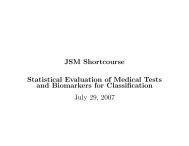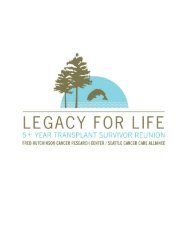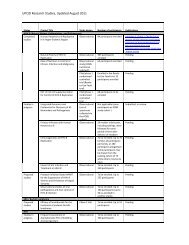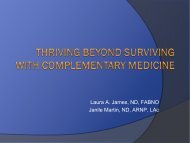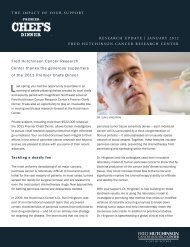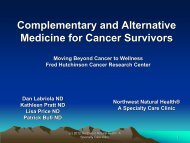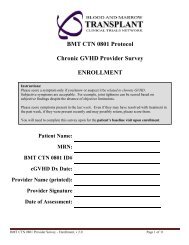Summer Undergraduate Research Program - Fred Hutchinson ...
Summer Undergraduate Research Program - Fred Hutchinson ...
Summer Undergraduate Research Program - Fred Hutchinson ...
You also want an ePaper? Increase the reach of your titles
YUMPU automatically turns print PDFs into web optimized ePapers that Google loves.
Extra Personal Statement #5<br />
I know that in order to become a successful scientist I must encompass an unwavering<br />
commitment to my work, and an inexhaustible desire to discover far beyond current<br />
knowledge. As a child, my curiosity of nature compelled me to bombard my parents with<br />
questions to which they often replied, “I don’t know, son.” Fortunately, their lack of<br />
knowledge motivated me to find the answers for myself, and I was soon drawn to<br />
science. However, in the deprived city of Richmond, California I never encountered<br />
scientists or other scholars, besides my physician; this is not the ideal medium to nurture<br />
a child’s scientific ambitions. Nevertheless, the values my parents instilled in me of love,<br />
respect, and dedication to work and family will strengthen the relationships I make as I<br />
continue my scientific career. My desire to obtain a PhD stems from my ability to<br />
overcoming obstacles encountered growing up and the ideals inspired from my scientific<br />
research during college.<br />
It was at the University of California Berkeley that my passion could finally be<br />
properly cultivated. Once there, I began my fellowship with the Minority Access to<br />
<strong>Research</strong> Careers (MARC) by completing the eight-week summer research institute that<br />
involved learning various skills from weekly rotations in eight faculty-research labs in<br />
Molecular Biology, Biochemistry, Cell Biology and Chemistry. After the training, I was<br />
to conduct research; not pre-determined experiments with known outcomes like- in my<br />
course labs, but actual cutting edge research. Predictably, I was excited to start working<br />
in my very own lab, and I initiated my research career in Professor Angela Vekkor’s lab,<br />
where they explore the structure of the diffusion barrier in the nuclear pore complex<br />
(NPC) as well as the mechanism by which cargo is translocated through it.<br />
The goal of my project was to identify domains of natively unfolded nucleoporins that<br />
specifically anchor them at the NPC; this is part of an on going project to elucidate the<br />
biogenesis of the NPC. Using DNA recombinant techniques, I expressed various<br />
evolutionarily conserved regions of nucleoporins as CFP (cyan fluorescent protein)tagged<br />
fusion proteins in yeast, and visualized their cellular location by fluorescence<br />
microscopy. I detected nuclear envelope localization for a distinct subset of the fusions,<br />
thereby, uncovering the domains (i.e. NPC tethering) in these natively unfolded<br />
nucleoporin that anchor them to the NPC. With the tremendous technological advances,<br />
science is becoming more and more interdisciplinary and, consequently, additional skills<br />
from other scientists performing research in different fields are required. Therefore, in<br />
search of attaining more diverse research experiences, I participated in a summer research<br />
internship at George Washington University.<br />
During this summer internship, I worked under the tutelage of Professor Mark<br />
Valentine to better understand the regulation of Plasminogen Activator Inhibitor-1 (PAI-<br />
1). The purpose of the project was to determine how a sirtuin deacetylase, 14-3-3<br />
regulatory protein, and a FOX transcription factor affect the insulin and reactive oxygen<br />
species (ROS) expression of the PAI-1 gene. We measured the influence that each<br />
protein (alone and in different concentrations and combinations) had on the expression of<br />
the PAI-1 gene evaluated by luciferase assays. The results showed that the sirtuin and<br />
FOX protein, individually and when combined, inhibit the insulin and ROS expression of<br />
the PAI-1 gene. The 14-3-3 protein also inhibited PAI-1 expression. When I created an<br />
experimental peptide decoy that inhibits 14-3-3 function, I observed a partial rescued<br />
gene expression. During that eight week-long summer, I learned to work with human cell<br />
lines, acquired an entirely new set of techniques, and produced a significant portion of<br />
data to the Valenitne lab for future publications. It is incredibly rewarding to know that I<br />
have contributed, even in a small way, to the overall pool of scientific knowledge.<br />
128




